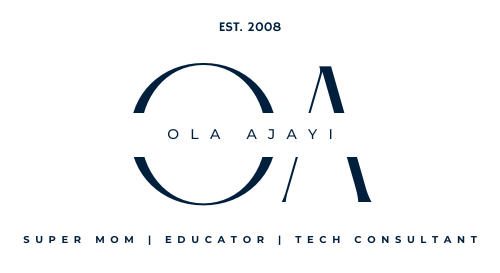Diversity, Equity, and Inclusion Trends in 2023

Diversity, Equity, and Inclusion Trends in 2023 by Ola Ajayi
As the tech industry has faced increased scrutiny for its lack of diversity and inclusion, there has been a push to create more inclusive and diverse teams and environments.
This includes hiring a more diverse workforce and creating policies and practices that support and empower underrepresented groups.
In light of this new development, what trends will guide DEI efforts in 2023 and beyond?
Key DEI Trends to Watch in 2023
A Deloitte report revealed that an effective DEI strategy improves employee engagement, productivity, and retention. With the increasing adoption of remote work structures, we have experienced a borderless recruitment regime.
This trend has resulted in an increased diversity of employees. Therefore, organizations must be alert to emerging DEI trends and take steps to build a safe culture for all.
Some trends that will lead the DEI space in 2023 include.
The Increasing Use of DEI metrics to Measure Progress:
Companies will invest heavily in tools to track and report on their DEI efforts and be held accountable for making progress.
DEI strategies have been built on goal setting and implementation, with few companies measuring the success of these initiatives.
However, with the rising need for a safe and engaging workplace structure, companies will need to turn to data analytics to analyze employee feedback, identify various challenges, and measure the success of each initiative. Also, companies that prioritize DEI will require partners to do the same. Showing data to support their claims will be vital to scoring partnership points moving forward. Therefore, DEI measurements and analytics through the employee lifecycle and within the Organization will be non-negotiable in 2023.
The Adoption of More Inclusive Policies and Practices:
In 2023, organizations will adopt more inclusive policies and practices to respond to the multigenerational workplace trend. This includes flexible work arrangements, equal pay for equal work, creating employee resource groups, and support for underrepresented groups. The current workforce cuts across different demographics, gender, and age.
For example, 2022 saw the rise of Gen Z taking the lead with tech recruitment. Thanks to the pandemic lockdown which resulted in rapid tech learning.
This trend creates a multigenerational workplace with a mix of baby boomers, Millennials, and Gen Z.
Research also shows 83% of executives assert that a multigenerational workforce improves performance, employee satisfaction, and revenue.
Therefore, it would be self-sabotage to ignore developing strategies that make Organization safe and attractive to top talents across different generations.
While Gen Z might lean towards a more flexible work structure and prioritize mental health, other sets might have different priorities. Therefore, in 2023, companies must create DEI strategies that consider the needs of all backgrounds and find a meeting ground that leaves no stone unturned.
We will also experience using more inclusive language in the workplace to cater to different gender roles.
The Rise of DEI Training and Education:
Companies will invest in DEI training for their employees to create more inclusive cultures and implement mentorship and sponsorship programs for underrepresented employees. Contrary to popular belief, DEI strategies are a two-way street. While building a diverse and inclusive workspace falls on the Organization, the employees have a more significant role to play.
DEI training and education help employees learn how to contribute to successfully implementing DEI strategies in an Organization. A primary goal is to shed light on bias, prejudice, and inequality to bring about tangible change. Without employee involvement, DEI strategies are just another document. As more companies embrace DEI in 2023, we will experience a trend in DEI training and development to support a safe and inclusive workforce.
DEI will Merge with HR Efforts to Facilitate Targeted Recruitment:
Currently, DEI strategies are slowly edging towards HR functions. DEI aims to create a work culture that supports underrepresented employees to provide a flexible and safe work environment.
A targeted recruitment strategy Will create a method for HR to tailor recruitment adverts, so it gets to people in underrepresented groups.
The targeted recruitment strategy will include the following:
Partnering with HR departments to ensure recruitment focuses on diversity in tech.
Using inclusive language in job postings.
Considering a more comprehensive range of qualifications and experiences during the hiring process.
Rise in Diversity Hiring at the leadership level
Having diverse Leadership is a vital part of successful DEI implementation. Not only does it help employees feel represented, but it also improves business revenue.
BCG research revealed that Organizations with a Diverse leadership team deliver 19% higher revenue.
In 2023, the discussion about DEI efforts on Organizations will shift from hiring diverse employees to hiring diverse executives. A complete representation at all levels will help employees have a sense of belonging. It will also improve communication across different levels of the Organization.
How Companies can take advantage of these Trends in 2023
According to a Mckinsey report, organizations with diverse and inclusive workforces are 35% more likely to outperform their competitors. Although the significant driving force for creating DEI strategies isn’t profitability, it’s a great ROI.
Organizations must implement strategies that consider everyone; you must invest resources and time towards implementing these strategies. The Era of slapping a “Diversity and inclusion” sign on every job advert and publication without verifiable results has ended. Organizations must create, adopt, implement, monitor, and optimize on an ongoing basis.
